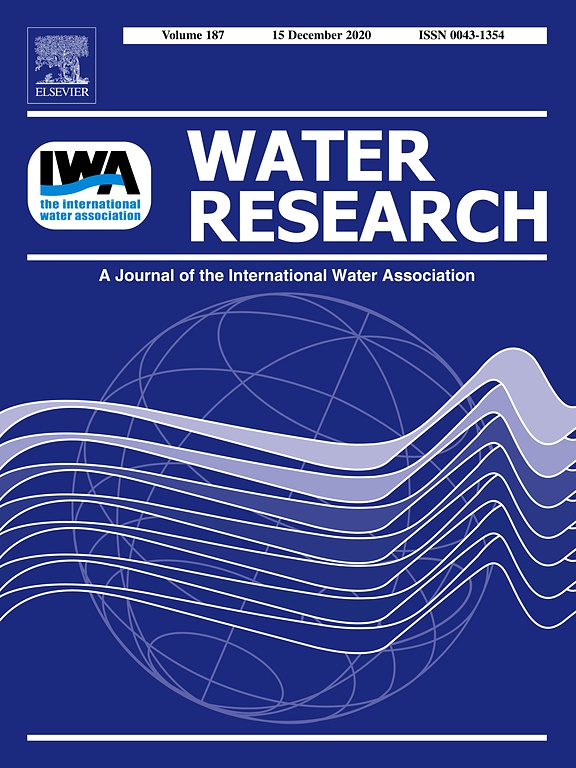Please find all scientific publications of IGB under > scientific publications
For more detailed information please refer to our > library catalogue
81 - 90 of 194 items
- Programme area:1) Biodiversity in a Changing World

November 2024
MycoKeys. - (2024)110, 273-285
20 years of bibliometric data illustrates a lack of concordance between journal impact factor and fungal species discovery in systematic mycology
R. Henrik Nilsson; Arnold Tobias Jansson; Christian Wurzbacher; Sten Anslan; Pauline Belford; Natàlia Corcoll; Alexandra Dombrowski; Masoomeh Ghobad-Nejhad; Mikael Gustavsson; Daniela Gómez-Martínez; Faheema Kalsoom Khan; Maryia Khomich; Charlotte Lennartsdotter; David Lund; Breyten Van Der Merwe; Vladimir Mikryukov; Marko Peterson; Teresita M. Porter; Sergei Põlme; Alice Retter; Marisol Sanchez-Garcia; Sten Svantesson; Patrik Svedberg; Duong Vu; Martin Ryberg; Kessy Abarenkov; Erik Kristiansson
November 2024
Water Research. - 269(2025), Art. 122784
Sequential decline in cyanobacterial, total prokaryotic, and eukaryotic responses to backward flow in a river connected to Lake Taihu
Jun Zuo; Siyu Yang; Hans-Peter Grossart; Peng Xiao; He Zhang; Rui Sun; Guoyou Li; Haoran Jiang; Qihang Zhao; Meng Jiao; Yao Cheng; Zeshuang Wang; Ruozhen Geng; Zengling Ma; Renhui Li

November 2024
Applied and Environmental Microbiology. - 90(2024)12, 1-20
Inside the Atacama Desert: uncovering the living microbiome of an extreme environment
Alexander Bartholomäus; Steffi Genderjahn; Kai Mangelsdorf; Beate Schneider; Pedro Zamorano; Samuel P. Kounaves; Dirk Schulze-Makuch; Dirk Wagner
November 2024
FEMS Microbiology Ecology. - 100(2024)11, Art. fiae139
Metabarcoding reveals ecologically distinct fungal assemblages in river and groundwater along an Austrian alpine to lowland gradient
Alice Retter; Christian Griebler; R. Henrik Nilsson; Johannes Haas; Steffen Birk; Eva Breyer; Federico Baltar; Clemens Karwautz
November 2024
Biological Reviews. - 100(2025)2, 855-870
Shedding light on biodiversity: reviewing existing knowledge and exploring hypothesised impacts of agrophotovoltaics
Rachel Schwarz; Yaron Ziv
November 2024
Journal of Hazardous Materials. - 479(2024), Art. 135675
Distinct influences of altitude on microbiome and antibiotic resistome assembly in a glacial river ecosystem of Mount Everest
Xin Liao; Liyuan Hou; Lanping Zhang; Hans-Peter Grossart; Keshao Liu; Junzhi Liu; Yuying Chen; Yongqin Liu; Anyi Hu

October 2024
JAMES. - 16(2024)10, Art. e2024MS004275
A Lake Biogeochemistry Model for Global Methane Emissions: Model Development, Site-Level Validation, and Global Applicability
Zeli Tan; Huaxia Yao; John Melack; Hans-Peter Grossart; Joachim Jansen; Sivakiruthika Balathandayuthabani; Khachik Sargsyan; L. Ruby Leung
October 2024
Water Research. - 268(2024), Art. 122602
Epilimnetic oligotrophication increases contribution of oxic methane production to atmospheric methane flux from stratified lakes
Fan Xun; Muhua Feng; Cheng Zhao; Wenlei Luo; Xiaotong Han; Zhen Ci; Yifan Yin; Rong Wang; Qinglong L. Wu; Hans-Peter Grossart; Peng Xing
October 2024
Nature Reviews : Earth & Environment. - 5(2024), 755-772
Hydropower impacts on riverine biodiversity
Fengzhi He; Christiane Zarfl; Klement Tockner; Julian D. Olden; Zilca Campos; Fábio Muniz; Jens-Christian Svenning; Sonja C. Jähnig
The authors discuss the impacts of hydropower on aquatic and semi-aquatic species and how the impacts accumulate spatially and temporally across basins. They recommend the STREAM framework: Systematic planning, Tracking hydropower impacts, Responsive adaptive management strategies, Elimination of hydropower infrastructure, Assessment of socioecological trade-offs, and Multi-actor decision-making.

October 2024
Environmental Science & Technology. - 58(2024)44, 19690–19701
Strong Subseasonal Variability of Oxic Methane Production Challenges Methane Budgeting in Freshwater Lakes
Liu Liu; Xin Zhang; Sina Schorn; Tomy Doda; Manchun Kang; Damien Bouffard; Georgiy Kirillin; Jana Milucka; Xiaotao Shi; Hans-Peter Grossart





